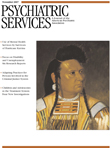Posttraumatic Embitterment Disorder: Definition, Evidence, Diagnosis, Treatment
Michael Linden, a physician at the Seehof Rehabilitation Center in Berlin, saw an increasing number of patients with symptoms that he described with a new term: posttraumatic embitterment disorder. After Germany's reunification, Linden observed an increase in the rates of reactive disorders. Several years later, patients continued to struggle with severe psychological reactions to negative life events. Linden and his colleges argue that such reactions cannot be classified as posttraumatic stress disorder, adjustment disorder, or even depressive disorder, and suggested posttraumatic embitterment disorder as a new reactive disorder.
In their book, Linden and his coauthors lay out the conceptual issues, empirical evidence, and treatment perspectives for their suggested new illness. The book includes a thorough review of the relationships between stress and life events and a review of the shortcomings of the descriptions of current adjustment disorders in including reactions to stressful life events that are not transient. They argue that "the trigger event in posttraumatic embitterment disorder is an exceptional, though normal negative life event such as conflict in the workplace, unemployment, the death of a relative, divorce, severe illness, or experience of loss and separation. The illness develops in the direct context of the event. Characteristic is a prolonged feeling of embitterment." This differentiates posttraumatic embitterment disorder from posttraumatic stress disorder, because the event is not life threatening or fear provoking.
The authors review the empirical evidence they have gathered in the book's second section, which includes diagnostic interviews and criteria, self-rating scales, and epidemiology. The third and last part reviews cognitive-behavioral therapy that has been adapted to treat this disorder.
As I was reading this protracted article in book form, I found it unconvincing that this "disorder," posttraumatic embitterment disorder, is indeed a separate entity, a psychiatric diagnosis that stands on its own. Specifically, in the section describing empirical evidence and discussing psychiatric diagnosis among patients with the purported disorder and control patients, the findings indicate a high degree of comorbidity or diagnostic uncertainty in posttraumatic embitterment disorder: 66% adjustment disorder, 40% dysthymia, 34% generalized anxiety disorder, 18% social phobia, 18% agoraphobia, and 16% personality disorder. In my opinion, with such a large scattering of diagnoses across the DSM, a common feeling of embitterment does not make a diagnosis.
Moreover, the study group as well as the control group appears to have been quite skewed: all study patients were recruited through the Department of Behavioral Medicine and Psychosomatics of the Seehof Rehabilitation Center. As the writers note, this is a rehabilitation clinic where the majority of patients are treated for work-related incapacities. The screening questionnaire was tested on 158 passengers traveling on trains from Berlin to Frankfurt, making this a culturally biased study that might be difficult to apply outside of this particular population.
These objections notwithstanding, the concept of a common psychological reaction after a stressful event that does not necessarily qualify as traumatic but results in a debilitating disorder is an interesting and thought-provoking concept. This book, however, provides a somewhat lengthy discussion. For those interested in the field of posttraumatic and adjustment disorders, I would recommend reading the shorter, original article first.



